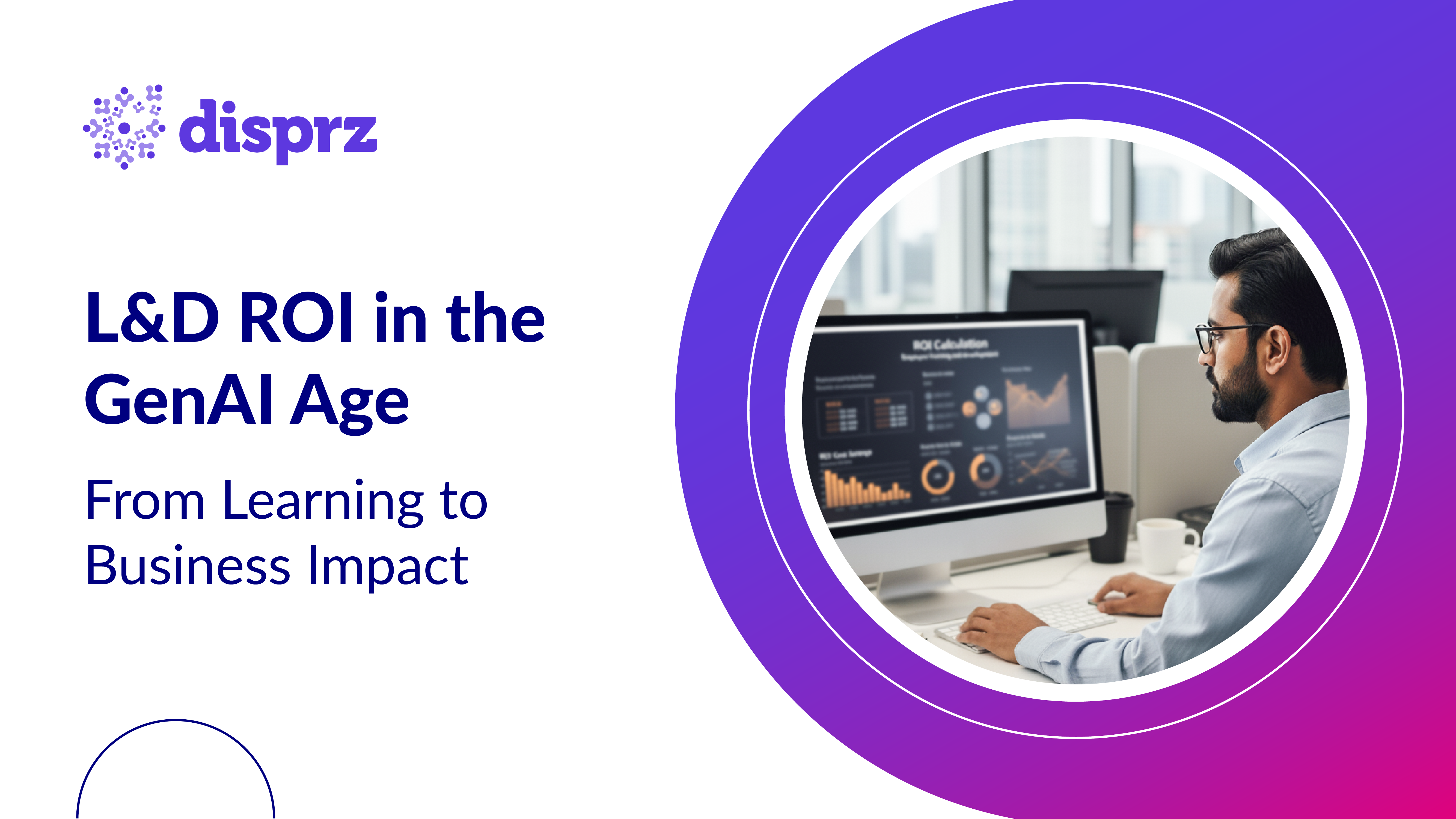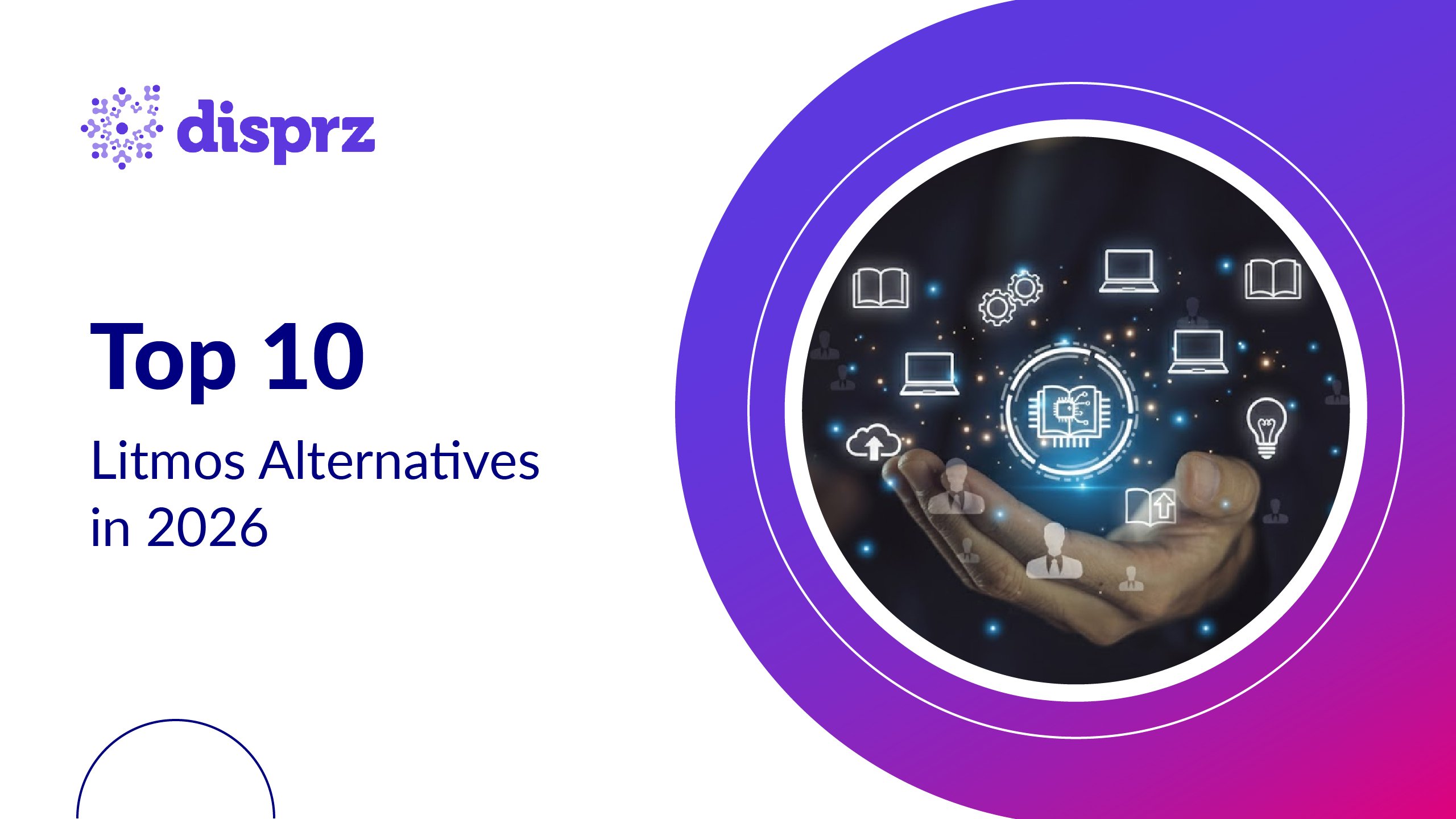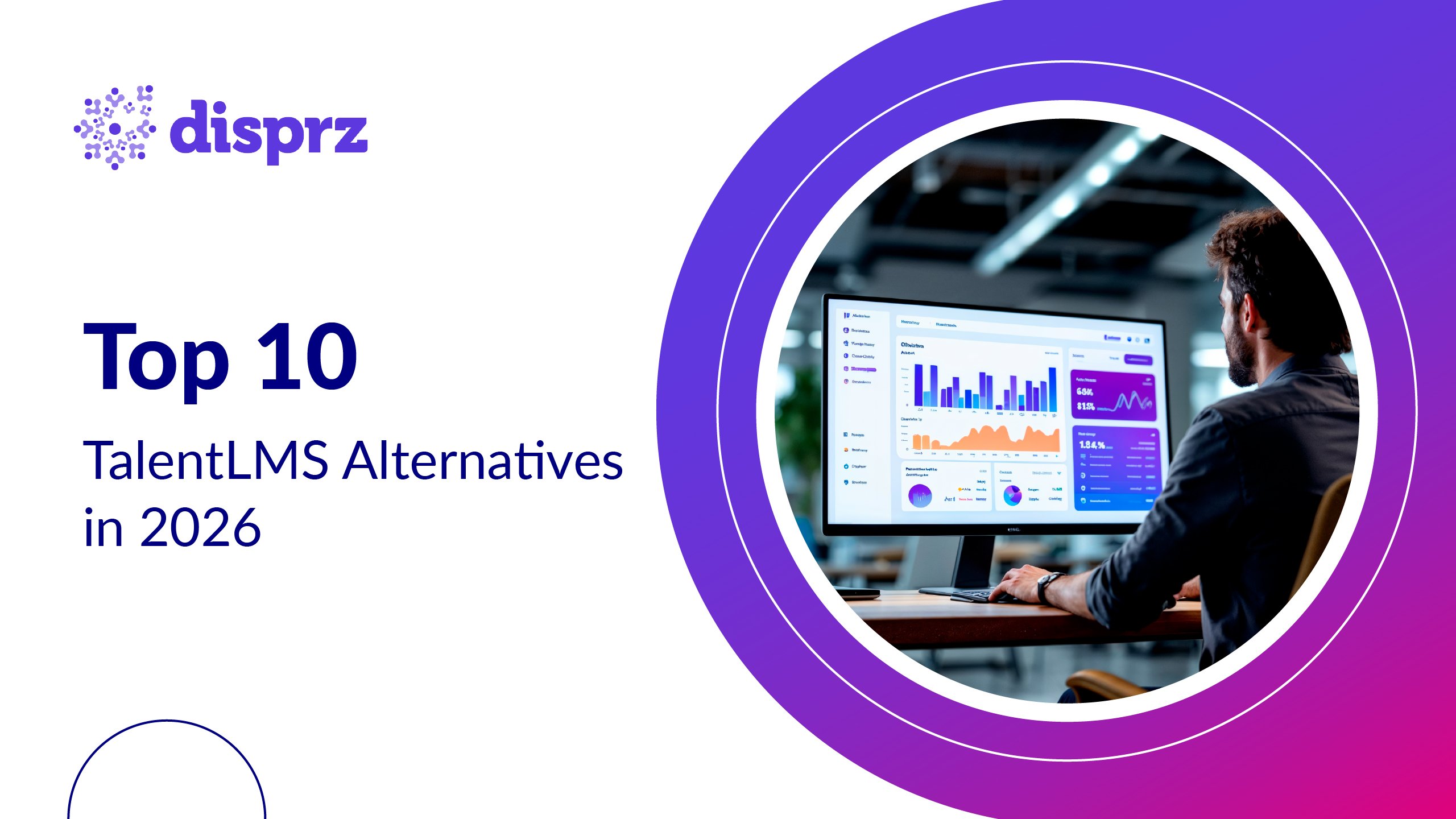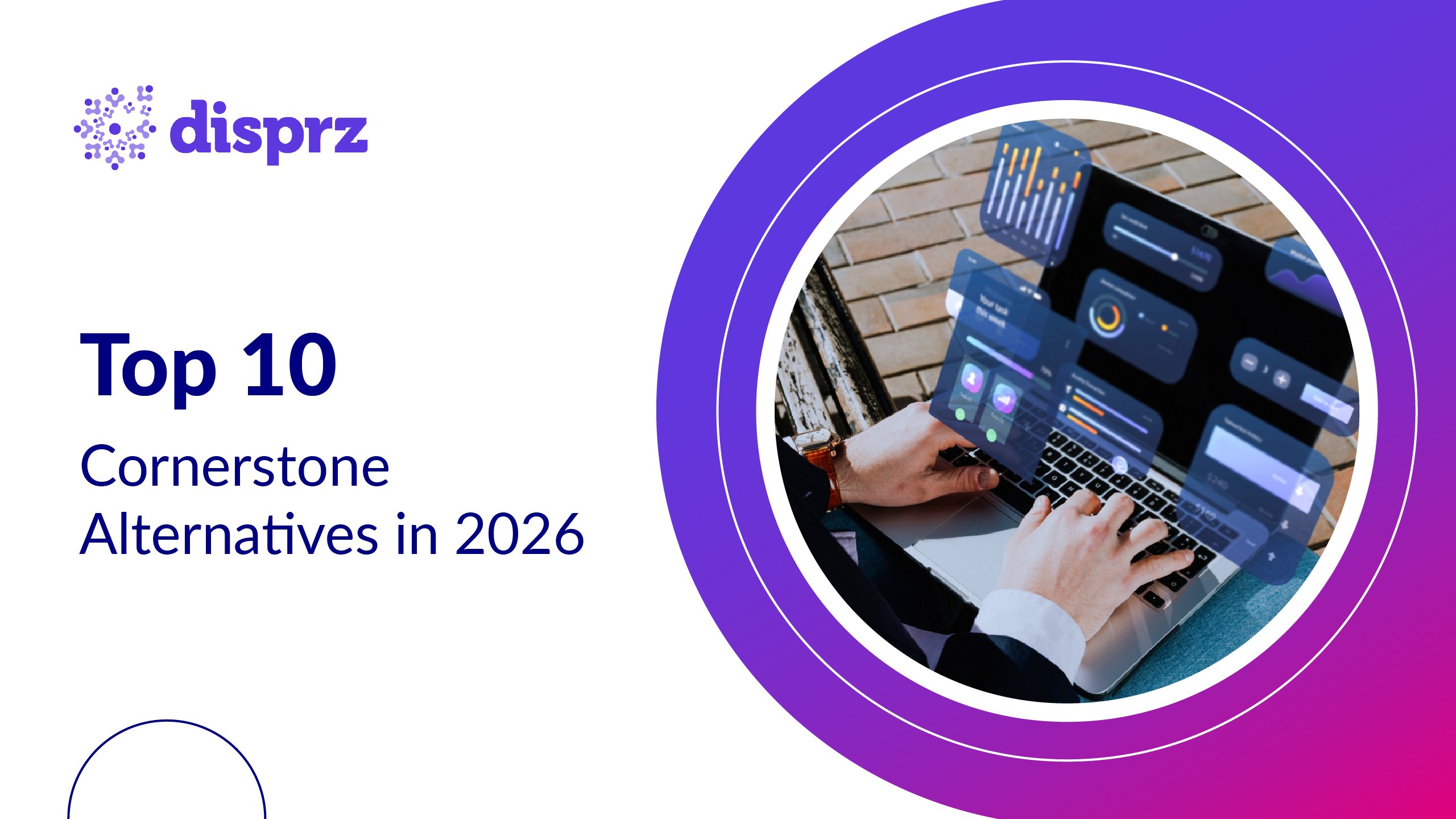Learning investments have always faced the same scrutiny: do they create measurable business value or just activity reports? Completion rates and feedback surveys are easy to track, but they rarely show whether a workforce is more productive, faster to ramp, or better equipped to deliver outcomes that matter.
The pressure to prove that link is intensifying. Skills are aging out in record time, industries are being reshaped by automation, and leadership teams expect the same financial accountability from Learning & Development (L&D) as they do from any other business function. ROI has become the common language, because without it, learning remains a cost line, not a growth lever.
Generative AI (GenAI) makes this shift possible. With adaptive pathways, contextual recommendations, and real-time data capture, it connects learning activity directly to performance impact. That means ROI of L&D programs can be measured not just after a program ends, but as it unfolds. For L&D leaders, this isn’t about tracking participation anymore; it’s about demonstrating business outcomes in hard numbers. We’ll explore how L&D leaders can transition from tracking activity to proving ROI, utilizing GenAI to directly connect learning investments to business outcomes, and unlock the full potential of L&D ROI in the AI age.
Why Measuring L&D ROI Matters More in 2025
1) Skills Are Expiring Faster Than Ever
The half-life of skills has dropped from five years to less than two, according to Deloitte. That means every investment in learning must show rapid payback. For example, if a sales team is trained on a new product line, the ROI is visible only if deal cycles shorten or average order value rises within months; not years.
2) Budgets Are Under Unrelenting Pressure
CFOs are asking tougher questions: “Why should training dollars be spared when every other function is cutting costs?” Without ROI, learning budgets are the first to shrink. Gartner reports that 74% of HR leaders say proving financial impact is now a board-level expectation.
3) GenAI Brings Both Scale and Clarity
Personalized learning at scale was once aspirational; with GenAI, it’s now achievable. The same technology that enables adaptive learning also generates rich data. When analytics reveal faster time-to-skill or shorter onboarding cycles, ROI becomes clearer and easier to demonstrate, helping L&D teams show tangible impact beyond traditional activity metrics.
4) Talent Strategy Is Becoming a Business Strategy
In 2025, talent readiness defines competitiveness. When a manufacturer automates its shop floor or a bank launches a new digital product, ROI from learning shows up in lower error rates, higher adoption, and fewer compliance penalties. The link between capability-building and market success has never been clearer.
Traditional ROI Models in L&D
Kirkpatrick & Phillips ROI Model
For decades, L&D leaders have leaned on two training effectiveness frameworks: Kirkpatrick’s Four Levels and Phillips’ ROI Model.
-
Kirkpatrick focused on evaluating training across four stages: reaction, learning, behavior, and results. It gave structure, but often stopped at survey-based feedback or knowledge tests.
-
Phillips extended the model by adding a fifth level: calculating ROI by comparing program benefits to total costs. This was the first serious attempt to speak the language of finance.
Why These Models Fall Short in the GenAI Age
The issue isn’t that these models are wrong; it’s that the world they were built for no longer exists. Learning today is not a discrete event but a continuous, adaptive process embedded in work. ROI needs to reflect that shift.
| Traditional Model Approach | Why It Breaks Down in 2025 | Example |
|---|---|---|
| Surveying learner reaction or knowledge | Captures sentiment, not performance impact. | A sales rep may “like” a product training but still miss targets. |
| Manager's observation of behavior change |
Too subjective, often anecdotal. | One manager sees improvement, another doesn’t, creating inconsistent data. |
| Business results tracked months later |
Too slow for skills with a 12 -18 month shelf life. | By the time the results show, the skill may already be outdated. |
| Cost-benefit ROI calculation |
Ignores the real-time, micro-impact of learning. | Compliance training may cut errors instantly, but Phillips’ model only sees aggregated annual savings. |
How GenAI Redefines ROI in Learning

GenAI is transforming how learning investments translate into measurable business impact. By combining real-time insights, personalized pathways, and automated analytics, organizations can measure AI-powered learning ROI in the moment, instead of waiting months for reports.
Its impact shows up clearly across three critical areas:
Predictive Analytics & Real-Time Reporting
-
Tracks learner engagement and progress continuously.
-
Predicts potential performance gaps before they affect business outcomes.
-
Example: Customer service reps likely to underperform can be identified mid-training for targeted support.
Personalized Learning Paths Improving Efficiency
-
Tailors content to each learner’s role, skill gaps, and experience.
-
Reduces time-to-skill by 30–40% by skipping redundant modules.
-
ROI impact: faster ramp-up and higher productivity per training dollar.
Automating Impact Measurement
-
Automatically links learning activities to KPIs like sales, compliance, or operational efficiency.
-
Generates dashboards showing real-time business impact.
-
Frees L&D teams from manual reporting, letting them focus on insights and program improvement.
Common Challenges in Measuring ROI Today
Measuring L&D ROI is harder than it looks. While organizations invest heavily in learning programs, translating those investments into clear, measurable business outcomes remains a struggle. Without a structured learning ROI model, recurring obstacles make it difficult to connect training directly to performance, productivity, and growth.
Linking Learning to Performance
Training programs often capture completions or test scores, but these metrics don’t show whether employees are applying new skills on the job. Without that connection, ROI remains abstract and unconvincing.
Example: A sales training shows 95% course completion, yet without tracking pipeline growth or deal closures, it’s unclear if the program actually boosted revenue.
Data Silos in HR Systems
Learning data, performance data, and HR records frequently reside in separate systems. This fragmentation prevents leaders from analyzing the full impact of training across teams or business functions.
Example: Onboarding metrics in the LMS indicate early progress, but if performance reviews are stored elsewhere, calculating productivity improvements or ROI becomes nearly impossible.
Difficulty in Proving Soft-Skill ROI
Skills like leadership, communication, and collaboration are critical to business outcomes, yet quantifying them is inherently tricky. Organizations often lack the tools to link these behaviors to measurable results.
Example: A leadership program may improve team cohesion, but without correlating it to project delivery speed or attrition reduction, executives struggle to see financial impact.
Measuring Long-Term Impact
Many programs deliver visible short-term results, but skills retention over time is often ignored. Without longitudinal tracking, it’s hard to determine if training yields sustained business value.
Example: A customer service program improves NPS immediately, but without follow-up metrics after six months, skill decay and long-term ROI remain unknown.
Capturing Informal Learning
Significant learning happens outside formal courses, through peer coaching, mentorship, or microlearning. Ignoring these contributions leaves a blind spot in ROI measurement.
Example: Junior engineers gain troubleshooting skills from peers, but because it isn’t logged in the LMS, it doesn’t count toward formal ROI calculations.
Step-by-Step ROI Measurement in the GenAI Age

Measuring ROI has evolved from a retrospective, spreadsheet-heavy exercise to a continuous, data-driven process. Generative AI in training now enables L&D leaders to link learning directly to business outcomes at every stage of the employee journey.
Here’s a step-by-step approach:
1) Define Clear Business-Aligned Metrics
Connect learning objectives to tangible business outcomes. Identify KPIs that matter most; revenue growth, reduced errors, faster onboarding, or improved customer satisfaction.
Example: Track how a sales enablement program increases average deal size, win rate, and time-to-first-sale for new reps.
2) Map Learning Activities to Outcomes
Break programs into modules, microlearning units, or adaptive AI pathways. Tie each activity to a specific performance improvement.
Example: Measure how completing a negotiation module increases contract values, while a compliance module reduces regulatory penalties.
3) Collect Real-Time Data
Leverage GenAI platforms to gather learning and performance signals continuously, including engagement, workflow application, and connected system outcomes.
Example: Monitor how employees apply new troubleshooting skills immediately after microlearning sessions, reducing production downtime.
4) Calculate Micro-ROI & Aggregate
Measure ROI for individual activities, then combine results for overall program impact. Micro-level insight drives optimization; macro-level analysis demonstrates total business value.
Example: Quantify how faster onboarding modules increase early productivity, then aggregate to show overall L&D ROI.
5) Iterate and Optimize
Use insights to refine programs continuously. Adjust content, sequencing, or delivery to maximize learning effectiveness and ROI.
Example: Identify low-application modules and redesign them to improve skill adoption and business impact.
How Advanced Learning Platforms Support ROI Measurement
Advanced learning platforms make ROI measurement practical by bringing all the right data together.
Here’s how the process works:
1) AI-Driven Learning Assignment
Learning is personalized based on role, skill gaps, and performance history. The system recommends modules or microlearning content that target the most impactful skills.
2) Continuous Tracking of Learning Activities
Every interaction - course completion, assessment scores, microlearning, or project work- is tracked in real time to capture engagement and progress.
3) Data Aggregation Across Systems
The platform pulls data from LMS, HRIS, performance management, and workflow tools, consolidating it into unified dashboards for easy visibility.
4) Linking Learning to Business Outcomes
Learning activity is correlated with measurable KPIs such as revenue, productivity, compliance, customer satisfaction, or error reduction. This creates the foundation for calculating impact.
5) Highlighting Trends and Skill Gaps
Predictive analytics identify learners at risk of underperformance or skill gaps, enabling targeted interventions that improve outcomes before performance issues arise.
6) Preparing Data for ROI Calculation
The platform consolidates all relevant inputs, such as training cost, learner engagement, skill application, and associated business metrics. L&D teams can then apply standard ROI formulas:
Key Data Points Captured from LMS, HRIS, and Business Systems
Advanced learning platforms consolidate data from multiple sources, creating a single source of truth that supports ROI measurement.
LMS (Learning Management System)
-
Tracks course completions, assessment scores, and learner progress.
-
Records engagement metrics such as time spent on modules or microlearning interactions.
-
Captures certifications and compliance status to quantify skill acquisition.
HRIS (Human Resource Information System)
-
Provides employee role, tenure, and department information for contextual analysis.
-
Tracks promotions, transfers, or performance ratings to correlate learning with career progression.
-
Integrates attendance and time-on-job metrics to measure learning efficiency and productivity impact.
Performance Management Tools
-
Measures individual and team KPIs, such as sales revenue, productivity, or error rates.
-
Records performance improvements or declines to link learning activity with tangible outcomes.
-
Captures feedback from managers or peers to evaluate skill application in real work scenarios.
Workflow & Business Systems
-
Tracks real-time application of skills in operational tools, CRM, or project management systems.
-
Measures business outcomes directly affected by learning, such as task completion time, customer satisfaction, or quality metrics.
-
Provides granular data that allows linking learning interventions to measurable business impact.
By pulling and consolidating data from these systems, the platform creates unified dashboards that show engagement, performance, and skill application, giving L&D teams all the inputs required to calculate ROI accurately.
Conclusion
Measuring L&D ROI has evolved from manual reporting and completion stats to a data-driven, outcome-focused process. Advanced learning platforms consolidate learning activity, performance data, and business KPIs into a single source of truth, giving L&D teams the insights needed to demonstrate real impact. By integrating AI-driven recommendations, continuous tracking, and predictive analytics, organizations can identify skill gaps, optimize learning pathways, and quantify the business value of every training initiative. In the GenAI era, ROI is no longer a retrospective metric; it’s a strategic tool for guiding workforce transformation.
To turn learning into a measurable business impact, start by assessing how your organization collects, integrates, and analyzes learning data. Explore platforms and tools that centralize insights, link learning to KPIs, and provide the inputs needed for accurate ROI calculation. Transform your L&D programs into a growth engine with a data-driven approach. Begin now.
FAQs
1) How does Generative AI improve ROI measurement in L&D?
Generative AI analyzes engagement, learning patterns, and performance metrics to show which programs drive real impact. By identifying skill gaps, recommending personalized content, and predicting performance improvements, AI helps L&D teams focus resources where they matter most. This ensures that every training intervention is tied to measurable outcomes, making ROI calculation more accurate and actionable.
2) What’s the formula for calculating ROI in training programs?
ROI in training is calculated as (Total Benefits - Total Costs) / Total Costs * 100. The “Benefit” includes measurable business gains, such as increased revenue, productivity improvements, error reduction, or adherence to compliance. The “Cost” covers training delivery, content creation, platform fees, and learner time. Advanced platforms consolidate all necessary data inputs, allowing L&D teams to compute learning ROI with ease.
3) What challenges do companies face in measuring L&D ROI?
Common challenges include linking learning activities to performance outcomes, fragmented data across HR, LMS, and business systems, and difficulty quantifying soft skills or behavioral changes. Limited real-time visibility and inconsistent reporting also make it hard to prove impact. Overcoming these challenges requires integrated platforms that consolidate data, track learning holistically, and provide actionable insights for accurate ROI measurement.
4) How can AI analytics link training to employee productivity?
AI analytics correlates learning activity with key business metrics such as task completion, sales revenue, quality, or efficiency. By tracking skill application in real work scenarios and predicting potential gaps, it identifies which training modules directly improve productivity. L&D teams can then prioritize high-impact programs, allocate resources strategically, and show a clear line between learning investment and measurable employee performance.
5) What tools help track ROI of corporate learning in real time?
Advanced learning platforms consolidate data from LMS, HRIS, performance management, and workflow systems into unified dashboards. They capture engagement, skill application, and KPI improvements, giving teams the visibility needed for ROI calculation. Predictive analytics highlight gaps and trends, enabling targeted interventions. These platforms provide the inputs for ROI formulas, making measurement accurate, actionable, and continuous rather than retrospective.








